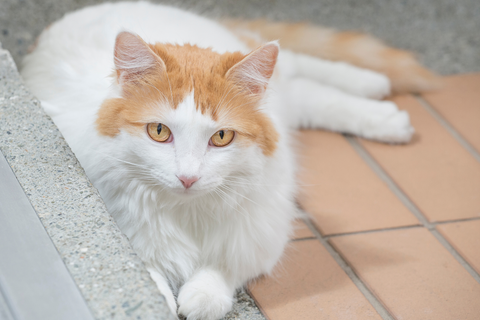
The novel coronavirus is still a mystery, with both scientists and pet parents unsure of the most recent news. Basepaws Head of R&D, along with our science and veterinary team, provide this detailed overview of the family of coronaviruses and how they affect pets, in hopes to add solid research to the chatter.
This overview also reviews the most recent data on COVID-19 infections in pets, as of April 8th, 2020. Most importantly, we as a community want to prevent overreaction, stay calm and aware, and help our pet parents by providing actionable advice on how to take care of your pet during the COVID-19 pandemic.
Coronaviruses - overview
The Coronaviridae family consists of two subfamilies of viruses - coronaviruses and toroviruses. While toroviruses can infect both terrestrial and aquatic animals, coronaviruses prefer mammals and birds as hosts. Coronaviruses get their name from their appearance - they have crown-like spikes on their surface and come in 4 subgroups - alpha (α), beta (β), gamma (γ) and delta (δ). They can cause a variety of diseases including pneumonia, reproductive disease, enteritis, polyserositis, hepatitis, encephalomyelitis, nephritis, and others. Pigs, cattle, horses, dogs, cats, camels, rodents, birds, bats, rabbits, ferrets and some wildlife species can all get infected with coronaviruses. However, while coronaviruses can cause serious diseases, many infections are subclinical (i.e., asymptomatic).
Pet coronaviruses of veterinary significance
A few alpha and beta coronaviruses of significance to pets have been described so far (Table 1).

Cats: Feline enteric coronavirus (FECV)
FECV affects domestic cats across the world, although the infection is often either subclinical or marked by mild gastrointestinal illness. Around 40% of cats in single households and 90% of cats in a multicat environment had, at some point, been exposed to the virus. Acute or chronic vomiting and diarrhea not responding to treatment can occasionally accompany the infection. If symptoms are mild, veterinarians will likely not administer treatment. When symptoms are severe, treatment includes fluid therapy, oral electrolyte solutions and antiemetics. No targeted antiviral therapy exists for FECV.
The route of infection is through ingestion or inhalation of feces containing FECV or through contact with contaminated litter boxes, housing, etc. Active infection prevention is mostly a concern in catteries and rescue shelters, not ordinary households. Some precautionary measures include: adequate litter box amount for the cats housed in the same place, daily litter box cleaning, weekly disinfection.
Cats: Feline infectious peritonitis (FIP) virus
A small percentage of cats infected with FECV (5-10%) develop feline infectious peritonitis. The virus is then referred to as feline infectious peritonitis virus (FIPV). FIP results from infection with genetic variants of FECV that have acquired the ability to replicate within macrophages (large white blood cells). This allows the virus to avoid destruction by the immune cells. These events trigger a strong, but ineffective immune response where the virus keeps replicating and organs get damaged.
The disease usually occurs in young or senior cats, or in cats with compromised immunity. Symptoms can include anorexia, chronic fever, malaise, weight loss, and, in some cases, ocular and neurological symptoms. There are two clinical forms of FIP - ‘wet’ form (characterized by abdominal effusion) and ‘dry’ form (lacking abdominal effusion). In the classical wet form, viscous liquid accumulates in the peritoneal cavity, resulting in abdominal enlargement (Figure 1). This form of the disease has a very rapid progression, with death within weeks or months. The dry form of the disease typically progresses more slowly.

The only available vaccine against FIPV has limited efficacy in cats that had already been exposed to FECV in the past. However, Colorado State University scientists are working on developing a more effective vaccine. Currently, treatment options for FIP are limited and mostly palliative, although two new therapies in development are showing promise. Treatment with the two compounds, GC376 and GS-441524, led to some improvement in tested cats, although relapses were frequent.
Dogs: Canine coronavirus
Enteric canine coronavirus infections are common in dogs worldwide. The infection causes the destruction of cells in the intestinal lining leading to maldigestion, malabsorption, and diarrhea. Coinfection with canine parvovirus can lead to more severe symptoms. Since numerous diseases are associated with diarrhea, a lab test to confirm coronavirus infection is recommended. A vaccine with limited effectiveness is available for canine coronavirus.
Dogs: Canine respiratory coronavirus
The canine respiratory virus (causing ‘kennel cough’) is genetically similar to the human ‘common cold’ coronavirus OC43. Infection most frequently happens during fall and winter. The virus spreads by aerosol droplets and it can lead to moderate-to-severe respiratory distress, pneumonia, inappetence, and death. During infection, the injury to the ciliated respiratory epithelium caused by the virus leads to vulnerability to secondary lung bacterial infections. There is currently no known vaccine that protects against canine respiratory coronavirus. Disease management relies on supportive care and prevention of secondary bacterial infections.
COVID-19 and pets
Recently, 2 dogs in Hong Kong, 1 cat in Belgium, 2 cats in New York, 5 tigers, and 3 lions in the Bronx Zoo tested positive for the virus causing COVID-19 (SARS-CoV-2). The first dog was a 17-year-old Pomeranian with multiple comorbidities and was owned by a COVID-19 patient. The dog tested ‘weakly positive’ across five molecular tests over a 2-week period. When two other types of tests for COVID-19 were used (culture-based and serological), the dog tested negative. This indicates the dog did not develop antibodies against SARS-CoV-2, meaning that the virus never caused a potent immune response. The second dog that tested positive for COVID-19 was a 2-year-old German shepherd and was also owned by a COVID-19 patient.
Not surprisingly, a COVID-19 patient owned the Belgian cat that tested positive for the virus. The cat started exhibiting symptoms a week after its owner contracted the disease. Similar to the Belgian cat, the two cats that tested positive for the virus in New York showed mild signs of respiratory illness. In at least one of those two New York cases, the cat was owned by a person confirmed to have COVID-19. The tigers and lions in the Bronx Zoo are also hypothesized to have become infected after interacting with a zoo employee who had COVID-19.
The most noteworthy information regarding pets’ susceptibility to COVID-19 comes from the first scientific study on the matter. The researchers found that SARS-CoV-2 replicates poorly in dogs, pigs, chicken, and ducks, but more efficiently in ferrets and cats. To study the effect of SARS-CoV-2 on cats, scientists inoculated five 8-month-old cats with the virus. They observed SARS-CoV-2 RNA in the nasal turbinates, soft palates, tonsils, trachea and small intestine of inoculated cats. The lung tissue was negative for the virus. Scientists detected infectious viral particles (not just viral RNA) in two of the cats, indicating active infection.
In the second part of the experiment, scientists placed three healthy cats in close proximity to three of the virus inoculated cats. They did this to test whether infected cats can transmit the virus to other cats. Only one of the three non-inoculated cats tested positive for SARS-CoV-2 RNA. This indicates that, in some cases, infected cats can transmit the disease to other cats.
This study’s results were largely replicated by another scientific group. Although intriguing, it is important to note a few key points about these studies and their findings.
- The viral inoculation conditions used to rely on very high doses of the virus. They are not representative of what happens during normal interactions between an infected human and their pet.
- None of the infected cats and dogs showed any symptoms.
- Another, much less publicized observational study found that cats living in close proximity to COVID-19 patients are unlikely to contract the disease themselves.
- There is no evidence that infected cats and dogs can transmit the disease to humans.
We should take all of these points into consideration when interpreting the research findings and their implications. “The overwhelming consensus is that our pets pose no particular threat to infecting us with the novel coronavirus,” said veterinarian Ernie Ward. The SARS-CoV virus that caused the 2003 epidemic was also able to infect cats, but there was no evidence of cats infecting humans.
How can we protect our pets from the consequences of COVID-19 infection in the family?
The CDC, AVMA, and some veterinarians have put together guidelines to help minimize the already small risk of COVID-19 infection in pets. Advice includes:
- If you have COVID-19, you should keep yourself isolated not only from other people, but also from pets. If you must continue daily pet care, you should wear a facemask when performing care duties or during play. Wash your hands before and after contact with the pet.
- If you do not have COVID-19, you can continue interacting with your pet as before.
- Practice good hygiene - wash your hands before and after any interaction and regularly clean the pet’s bowls, toys, etc.
- Restrict your pet’s contact with other animals and people outside the household.
- Bathe your pet after any contact with a potentially infectious person.
- Restrict your cat’s outdoor activities.
- Wash your hands after touching other people’s pets.



